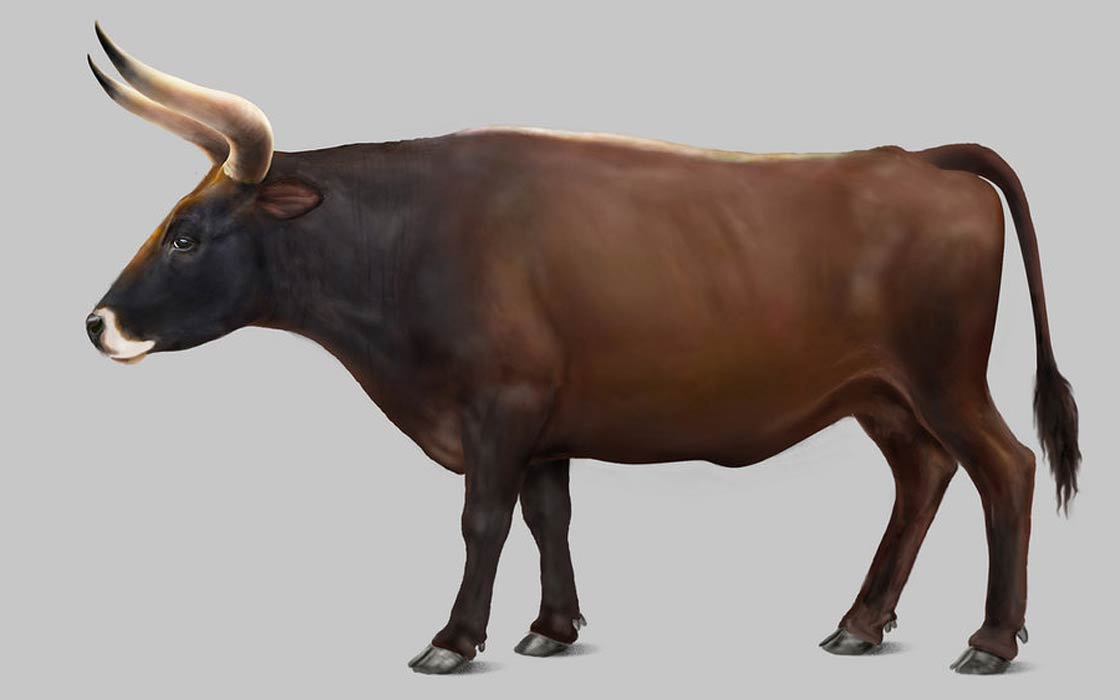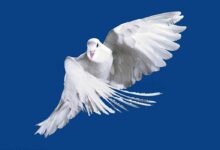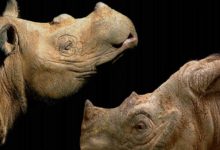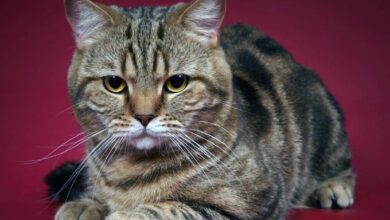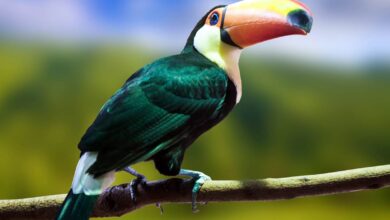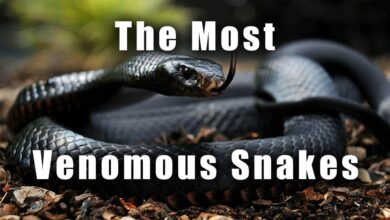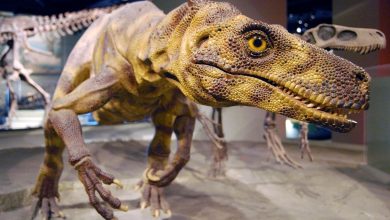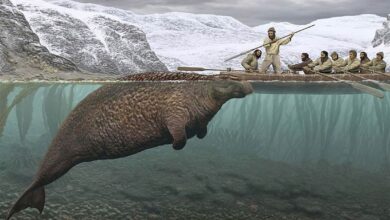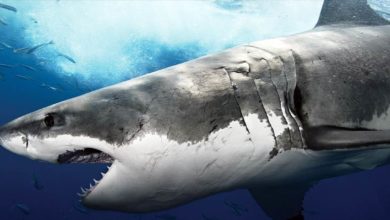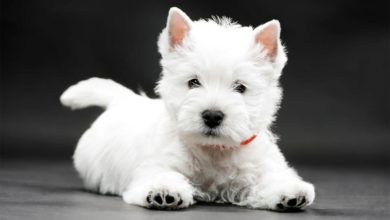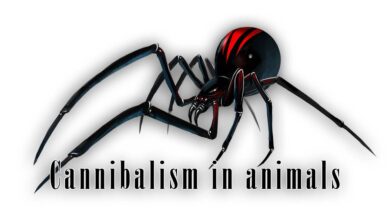Aurochs – tur, Aurox, aurochsen, urus, ure
Aurochs – the extinct ancestor of some modern cattle breeds. Its large, twisted horns and aggressive behavior when threatened made it an attraction of the arenas in the Roman Empire. Its impressive dimensions also made it an extremely interesting target for royal and noble hunting. All this could lead to only one thing – extinction.
Classification
- Kingdom: Animalia
- Phylum: Chordata
- Class: Mammalia
- Order: Artiodactyla
- Family: Bovidae
- Subfamily: Bovinae
- Genus: Bos
- Species: †Bos Primigenius
- Names: Aurochs – tur (polish name), Aurox (German name), aurochsen, urus, ure
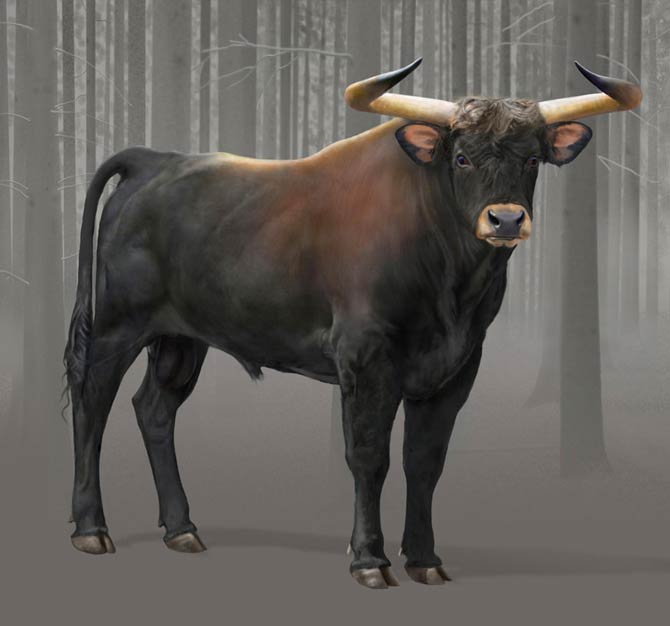
Evolution and occurrence
The aurochs inhabited the earth about 2 million years ago. The last specimens died out in the 17th century (1627) in Poland in a forest near Jaktorów – a village in the Masovian Voivodeship.
There are three subspecies of aurochs:
- Bos primigenius namadicus – this was the first subspecies of aurochs that appeared on earth 2 million years ago in India. Nine thousand years ago they were domesticated as zebu (Bos indicus).
- Bos primigenius primigenius – inhabited the steppes and taigas of Europe, Siberia and Central Asia. It was domesticated in the Middle East around the 6th millennium BC. Excessive hunting resulted in a privilege of kings and nobility that made the animal extinct in 1627. The last of this aurochs species was a female – she died of natural causes.
- Bos primigenius africanus – occurred in the forests of North Africa, and genetically was very similar to the Eurasian aurochs. It probably came from animals migrating to Africa from the Middle East. Most likely, they died out before the Middle Ages.
Natural environment
The natural environment of the aurochs were forests – mostly mixed, cut by meadows and thickets. According to old sources, the animal was even supposed to visit farmland in the summer.
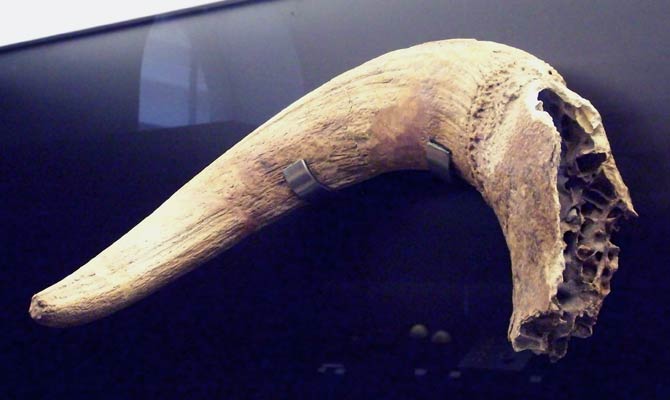
Characteristics
The appearance of the aurochs was reconstructed on the basis of found bones, historical descriptions and illustrations – mainly rock paintings.
The shape of the animal’s body was surprisingly different from that of modern cattle. It had much longer and slender legs, which meant that the height of the aurochs was almost equal to its length. The head – due to the fact that it had to lift large, heavy horns, was much larger and more elongated. Both males and females had horns, but they were larger in bulls. They protruded from the skull at a 60-degree angle, tilted forward and curved inward.
The color of the coat varied with age and gender. Calves were born chestnut, adult males were dark brown, and females were red-brown. The mouths of both the bulls and the cows were brighter than the rest of the body.
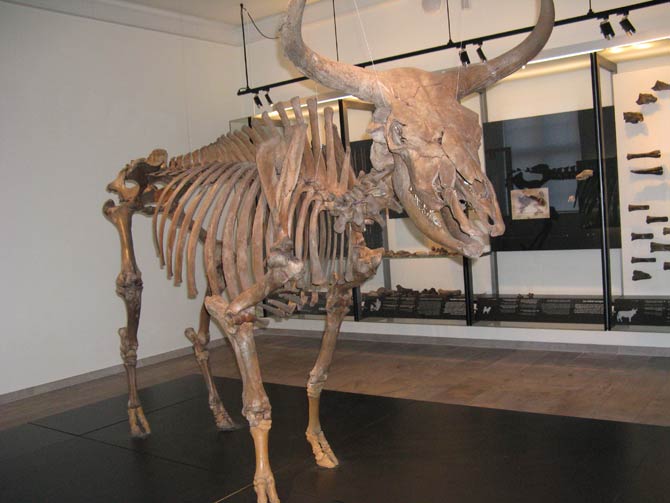
Diet
Aurochs was a herbivorous animal. So his food consisted of grasses, leaves of shrubs and trees, and in the autumn also acorns and forest litter.
Social life
Aurochs, like other cattle species, formed herds – at least for one season, i.e. winter. The group consisted of no more than 30 individuals, mainly cows, calves and young bulls. Adult males wandered alone or in several.
Aurochs gained status in the group through fights involving both males and females.
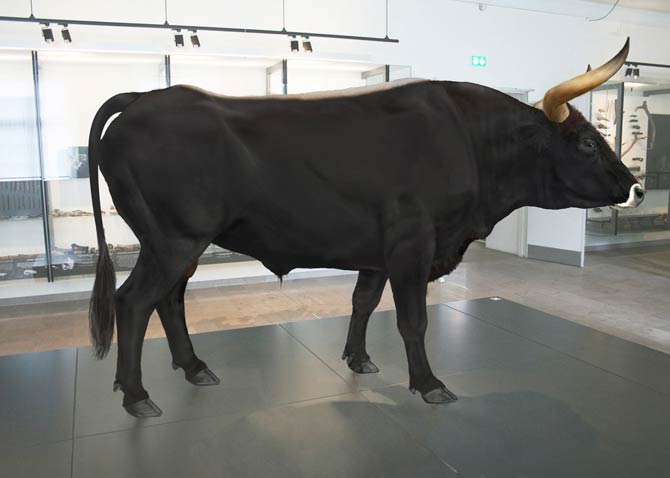
Reproduction
The mating season of aurochs was most likely in late summer or early autumn. There were extremely aggressive fights between the bulls, which could even lead to the death of a weaker individual, as evidenced by the remains found in Jaktorów (Poland).
Pregnancy in aurochs lasted 9 months, and the young were born in late spring. For the duration of the birth, the female separated from the herd, looking for a safe place to deliver the little ones.
Then she looked after them until they were not strong enough to keep up with the herd while foraging.
Young cows reached sexual maturity as early as the third year after birth. One female gave birth to several offspring throughout her life.
The lifespan of the aurochs was 20-25 years.

Predators
In prehistoric Europe, Asia and North Africa, aurochs were most likely hunted by large cats, such as lions, tigers, and hyenas. Later, however, the adult individuals did not have natural enemies, only the young fell victim to wolves from time to time.
Extinction
The extinction of aurochs began with Western Europe. They disappeared from France in the 10th century, and from Germany at the turn of the 11th and 12th century. In the fourteenth century, they were present only in Masovia (Poland), and the last aurochs died in the seventeenth century.
The reasons for the extinction of this species of animals include excessive hunting, expansion of human settlements, cattle diseases and climate change.
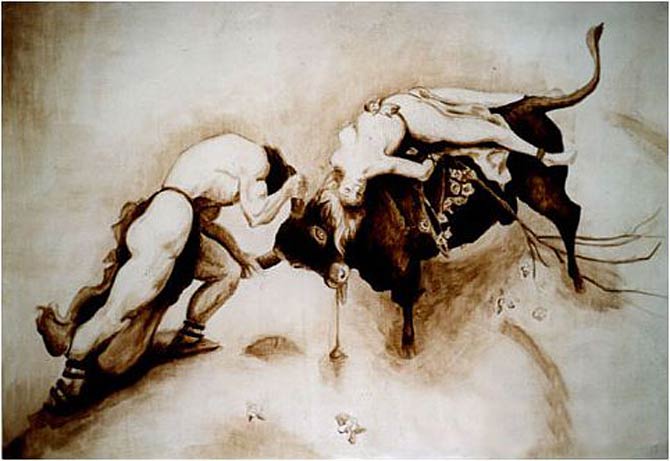
Aurochs, Ursus and “Quo vadis” by Henryk Sienkiewicz
In chapter LXVI of “Quo vadis”, Henryk Sienkiewicz describes the fight that Ursus had with the Germanic aurochs (aurochs). Of course, this is a myth, impossible to be true in the times of the novel’s action and even today.
There are no such strong men in the world, capable of facing an aurochs, who according to Sienkiewicz’s description was “monstrous”, without any weapons. It can be safely assumed that it would have to be an Aurochs, which weighed almost a ton, and as we know, the largest specimens even reached the weight of 1500 kg. In a direct clash with such an animal, no man, not even the strongest one, would stand a chance.
In order to realize the power of the aurochs and the strength that Ursus had to face, we recommend taking a look at the gaur (Bos gaurus) – it is the most powerful bull in the world, some individuals can reach 1500 kg of weight, similar to the biggest aurochs.
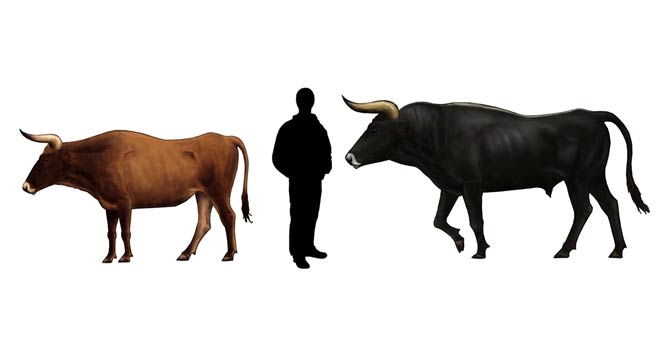
Data / dimensions (size)
Aurochs (Bos primigenius)
Sexual dimorphism in aurochs was quite visible, was quite visible, not only in coloration, but also in size. The males were larger than the females. Their size also depended on the place of occurrence: northern species reached larger dimensions than southern ones.
- Body length: 2.6 – 3.1 m (8.5 – 10.2 ft)
- Height at the withers: 1.6 – 1.8 m (5.25 – 5.9 ft))
- The length of the horns: up to 80 cm (2.6 ft)
- Horns diameter: 10 – 20 cm (3.9 – 7.9 in)
- Weight: up to 1,500 kg (3,306 lb)
Due to its dimensions and weight, it is often compared to the European bison, although it was heavier than the European bison.
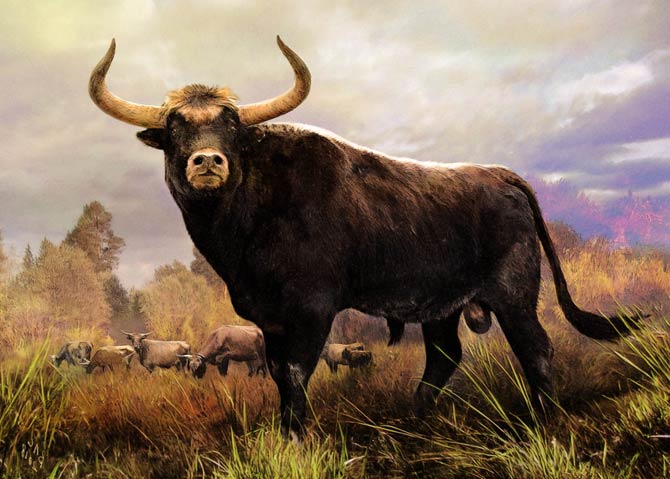
Aurochs – interesting facts
- During the Roman Empire, aurochs were used as a fighting beasts in slave and gladiators fights, as you can read about in “Quo vadis” by Henryk Sienkiewicz. Ursus breaks the neck of the aurochs in the defense of Ligia.
- Aurochs also lived in Sicily – they arrived there while it was still connected with Italy. After the disappearance of the natural bridge, the animal evolved into a 20% smaller variety of cattle there.
- Polish scientists want to recreate the aurochs on the basis of genetic material obtained from animal remains in museums. The initiator of the project is the Polska Fundacja Odtworzenia Tura (eng. Polish Tur (Aurochs) Reconstruction Foundation).
- From the horn of the last deceased aurochs, a hunting horn was made framed in gilded silver. It belonged to King Zygmunt III Waza (eng. Sigismund III Vasa), but after the Swedish invasion, it went to Sweden, where it is still today in the Stockholm Arsenal Museum.
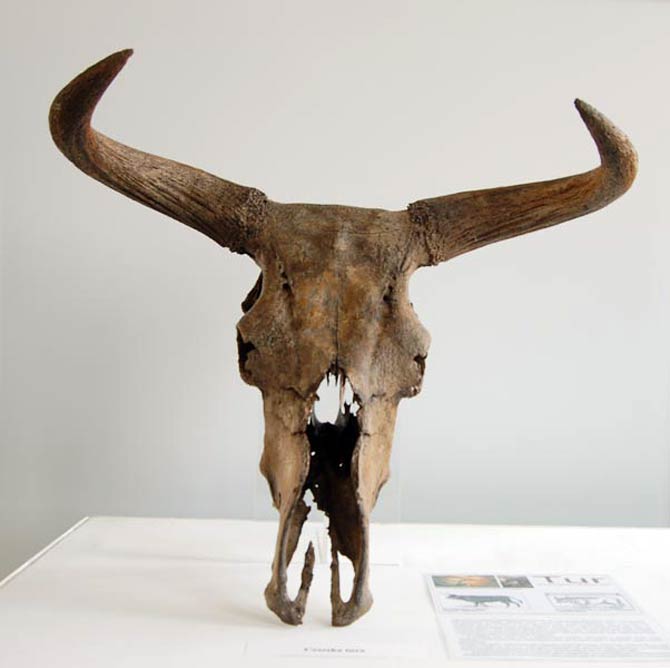
Recommended
- Megafauna
- Mammoth
- Stegodon
- Mastodon
- Platybelodon
- Indricotherium
- Cave bear
- Short-faced bear
- American lion
- European cave lion
- Smilodon – Saber-toothed tiger

